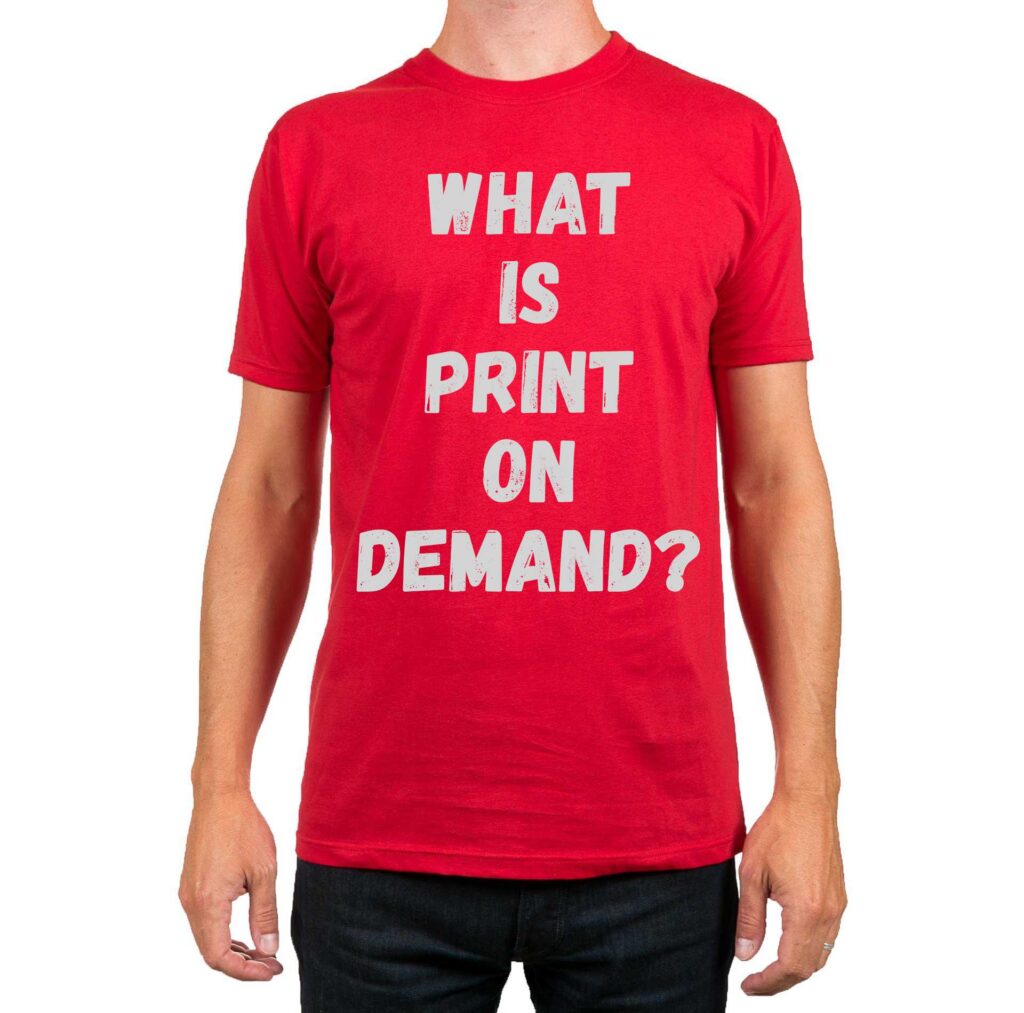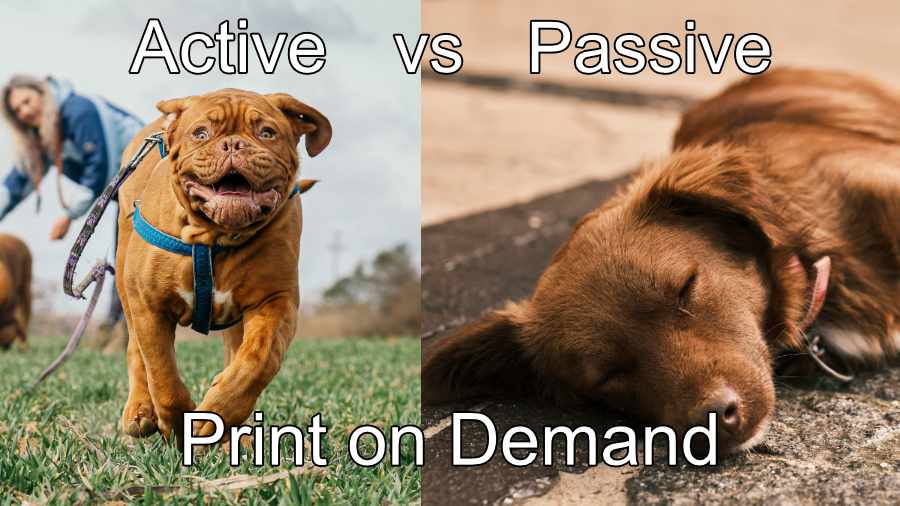Are you thinking about starting a print on demand business right now? Well before you do that, there is one very important decision that you need to make, and that is what type of print on demand business model are you going to use? Were you even aware that there were different options? If not, fear not good reader, because below we are going to dig into what the different models are, the benefits and potential drawbacks for each and give you a comprehensive guide to everything you need to know in 2025 for each, including profit potential, time investment, and which option might work best for your goals. So let’s get going.
What is Print on Demand? Understanding the Basics
Before diving into the differences, let’s clarify what print on demand means. Print on demand (POD) is a business model where products are created only after a customer places an order, eliminating the need for inventory management and upfront product costs. If you want a more detailed breakdown you can check out our recent blog post going deep into the topic of what it is.

Traditional Print on Demand: The Active Business Model
The first model that we will go into is the traditional print on demand business. This model requires active management and ongoing attention in order to be successful and maximize your earnings. Here’s what you need to know about running a traditional POD store:
- Product Design and Creation Process
- Create custom designs that will be made available for sale on products such as t-shirts, hoodies, mugs and other POD options
- Execute market research and strategically select the products that you are going to sell.
- Create professional product photos or mock ups, and optimize your sales listings.
- Regularly maintain and update your catalog of offerings.
- Marketing and Sales Strategy
- Engage in social media advertising campaigns, which requires building followings and engaging with them.
- Manage your paid advertising campaigns, and ensure this is included in your budgeting
- Create a custom storefront, and integrate with payment processing systems.
- Directly engage and support customers with their orders.
- Order Fulfillment Systems
- Integrate with POD suppliers systems.
- Handle order processing and tracking to ensure delivery
- Monitor and verify quality control of products you list and sell.
- Actively monitor customer satisfaction and address any issues to protect your brand
Passive Print on Demand: The Hands-Off Alternative
Passive print on demand offers a more hands-off approach to selling custom products. Generally this means that you will be creating products that are offered through third party providers or marketplaces and not necessarily interact directly with customers. Here’s how this business model works:
- Design Upload Process
- You create the design, and upload it and select the products you want to offer it on.
- Easily generate products across various categories.
- Product listings are managed by the marketplace.
- Storefronts are provided as part of the marketplace platform.
- Platform-Driven Sales System
- Marketing of products is handled by the marketplace platform
- Customers are able to be acquired automatically since they search across the marketplace
- Customer service is handled by the platform, as they are the ones selling the product.
- You get built in traffic generation as users on the marketplace can organically find your products
- Automated Revenue Generation
- Payment for works is handled in the form of royalties, since you are not actually the one selling the product
- Payment processing is automated
- You can post your works across multiple platforms, which means you can increase potential revenue streams.
- Generally maintenance required for this model is limited.
Key Differences Between Passive and Traditional POD
Business Control vs. Convenience
Traditional POD advantages:
- You control the pricing of the products you list, which may not be an option through some passive marketplaces.
- You can create a unique brand, which you manage.
- Customers are interacting directly with you and your business.
- You control how and where you market your products.
Passive POD benefits:
- Listings are automated based on pre-defined product options
- Customer bases already exist
- Fulfillment of orders is automated
- The technical skill required to get into this model is low in comparison.
Income Potential and Profit Margins
Traditional POD earnings:
- Higher profit margins
- Full pricing control
- Strong brand value potential
- Scalable business model
Passive POD revenue:
- Passive income streams
- Multiple platform earnings
- Lower overhead costs
- Reduced financial risk
Time Investment Requirements
Traditional POD time commitments:
- Daily marketing tasks
- Ongoing customer support
- Regular store updates
- Performance optimization
Passive POD time needs:
- Initial design work
- Basic SEO optimization
- Minimal maintenance
- Focus on design quantity
How to Choose Your POD Business Model
Consider passive print on demand if you:
- Value automated income generation
- Focus primarily on design creation
- Have limited marketing time
- Prefer hands-off operations
Select traditional print on demand if you:
- Want to establish a unique brand
- Prefer business operation control
- Can dedicate time to marketing
- Aim for maximum profit margins
Print on Demand Options
At this point, I’d like to share some of the common platforms that you can use for each business model.
Traditional Providers:
Passive Providers:
Frequently Asked Questions About Print on Demand
Q: What’s the startup cost difference between passive and traditional POD?
A: Passive POD typically requires lower startup costs, mainly needing design software and time. Traditional POD may require additional investment in marketing, website development, and brand building.
Q: Can you make more money with passive or traditional POD?
A: Traditional POD usually offers higher per-sale profits, while passive POD can generate steady income across multiple platforms with less active management.
Q: How long does it take to start making money with each model?
A: Traditional POD can generate sales faster with effective marketing, while passive POD often requires more time to build sustainable income but needs less active management.
Conclusion: Making Your Print on Demand Choice
Both passive and traditional print on demand offer viable paths to online entrepreneurship in 2025. Your choice should align with your available time, business goals, and desired level of involvement. Many successful print on demand entrepreneurs combine both approaches, using passive POD platforms to complement their main traditional POD business.
Success in either model requires creating high-quality designs and understanding market trends. The main difference lies in how much time you want to spend on business operations versus focusing on design creation.
Ready to start your print on demand journey? Consider your goals, available time, and preferred working style to choose the model that best fits your needs.
If you like this content follow us on socials.


Leave a Reply